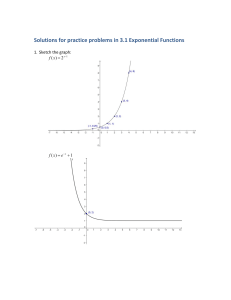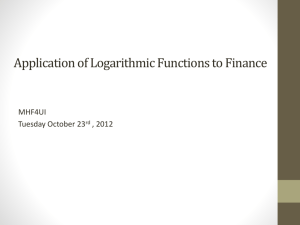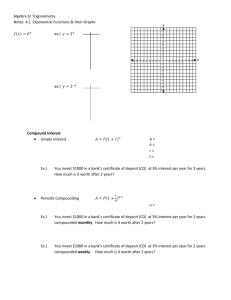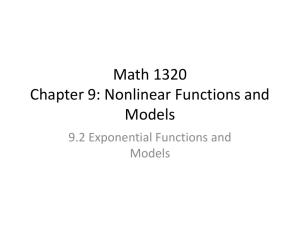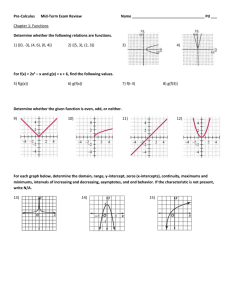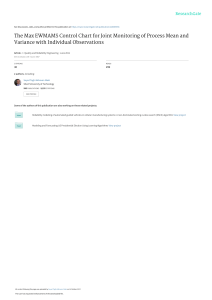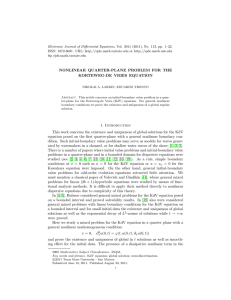Page 1 Section 2.4: Exponential Functions
advertisement
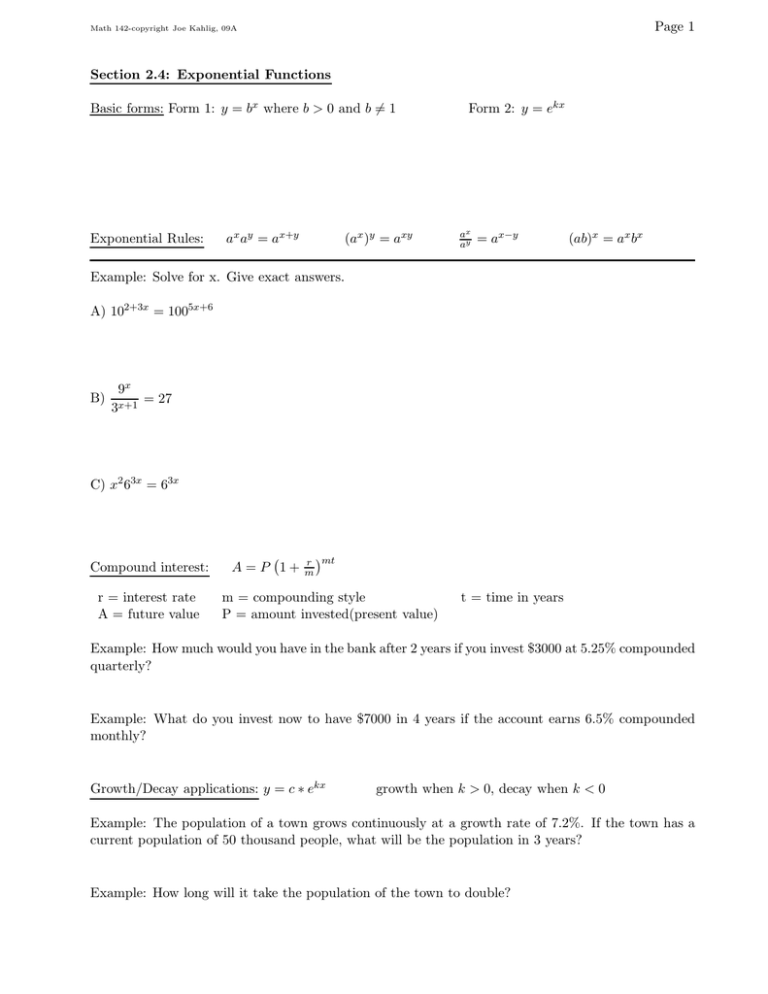
Page 1 Math 142-copyright Joe Kahlig, 09A Section 2.4: Exponential Functions Basic forms: Form 1: y = bx where b > 0 and b 6= 1 Exponential Rules: ax ay = ax+y (ax )y = axy Form 2: y = ekx ax ay = ax−y (ab)x = ax bx Example: Solve for x. Give exact answers. A) 102+3x = 1005x+6 B) 9x = 27 3x+1 C) x2 63x = 63x Compound interest: r = interest rate A = future value A=P 1+ r mt m m = compounding style P = amount invested(present value) t = time in years Example: How much would you have in the bank after 2 years if you invest $3000 at 5.25% compounded quarterly? Example: What do you invest now to have $7000 in 4 years if the account earns 6.5% compounded monthly? Growth/Decay applications: y = c ∗ ekx growth when k > 0, decay when k < 0 Example: The population of a town grows continuously at a growth rate of 7.2%. If the town has a current population of 50 thousand people, what will be the population in 3 years? Example: How long will it take the population of the town to double?
